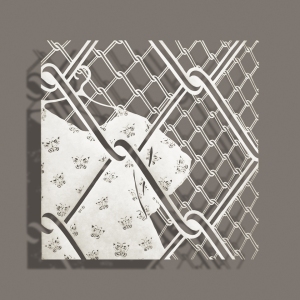Whitney Tembelis wrote:
I am a student at Milwaukee’s Institute of Art and Design and I am writing a paper on the art of cut paper. I have been a fan of your work for a while and am wondering if you could tell me any personal history, thoughts on the media, or any knowledge of the art’s history.
I wrote:
I came across Chinese paper cutting long time ago and knew that it was a kind of folk art. But I didn’t start making my own until 2005. In college, we learned to practice “scholarly” art like Chinese calligraphy and landscape painting. Folk art was not part of the academic curriculum.
My father is an art lover and amateur artist. An interior designer by training, he likes all kinds of art. When I went back to Hong Kong in 2005, he gave me his small paper cutting collection. I immediately wanted to know whether I had the chops to make them because they looked so intricate and difficult to create.
And the rest is history.
My thoughts on Chinese paper cutting at the time was that it had a great sense of innocence, reflecting farm lives with playfulness and motifs of nature, children, and folklore. Our lives are so different now that the innocence is lost. To me, staying true to the spirit of paper cutting is most important and that means to reflect the life, psyche, and culture of our time.
The slide show below is a traditional paper cutting that inspired me to create “Childhood Torture–Covering Mouth” in 2006.
I have done a lot of research on the history and contemporary development of Chinese and Swiss paper cuttings. I went to both countries to visit galleries, museums, and artists to see what was done and what’s being created today.
Chinese paper cutting has been around for thousands of years but it couldn’t be earlier than the invention of paper. China invented paper during the Han dynasty, around 206 B.C.-A.D. 220.
Many paper cuttings were hand cut by village women in their homes. Grandmothers, mothers, and daughters gathered after a day of household chores to create cuttings to pass time, earn extra income, or use as decorations for special occasions. Paper cuttings were not supposed to last. People glued them directly on window panes and walls.
The women used sewing scissors that were not very small. But I have seen some very experienced cutting artists who made fairly intricate pieces with the sewing scissors.
Traditional Chinese paper cuttings have many different styles, largely based on regions where they are/were made. Often, the paper cuttings were created using red paper because the color red is considered very auspicious in Chinese culture. Over time, many more colors are used and some of those in my collection are hand painted with an array of vivid colors. There’s also a technique to glue the paper cutting on top of gold foil or other painted papers.
In addition to being an art form in its own right, paper cutting was also used to make pattern/design templates for embroidery, lanterns, and textiles.

